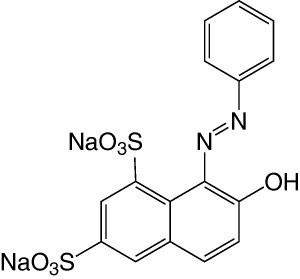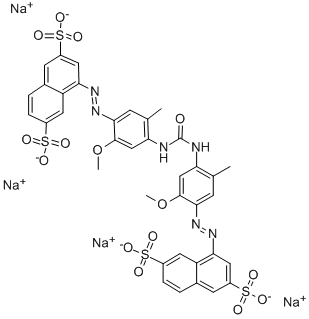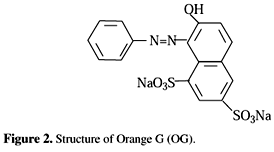Formula C16H10N2Na2O7S2 | Molar mass 452.38 g/mol | |
 | ||
Orange G or orange gelb is a synthetic azo dye used in histology in many staining formulations. It usually comes as a disodium salt. It has the appearance of orange crystals or powder.
Contents

Staining

The main use of Orange G is in the OG-6 Papanicolaou stain, to stain keratin, however it is also a major component of the Alexander test for pollen staining.
It is often combined with other yellow dyes and used to stain erythrocytes in the trichrome methods.
Color marker

Orange G can be used as a color marker to monitor the process of agarose gel electrophoresis, running approximately at the size of a 50 Base pair (bp) DNA molecule, and polyacrylamide gel electrophoresis. Bromophenol blue and xylene cyanol can also be used for this purpose. (However, the apparent "size" of all these dyes varies according to the concentration of agarose in the gel and the buffer system used, so one should look up the appropriate reference before using the dyes to determine how far a gel has run.)
pH indicator

Despite its two ionizable groups, it shows only two colors in aqueous solution, brilliant orange in neutral and acidic pH or red in pH greater than 9.


